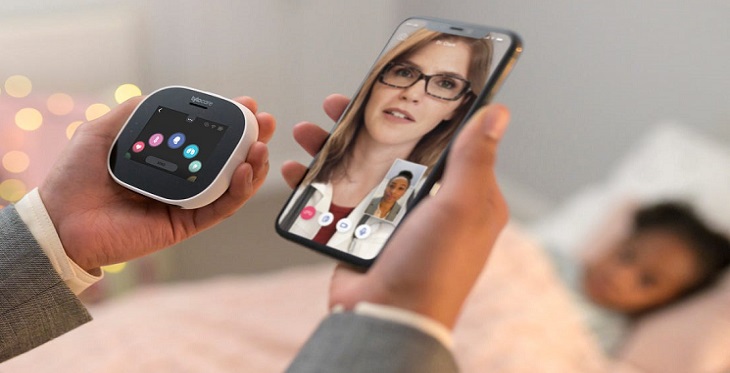There is a glaring shortage of healthcare providers across the world as is, and with the novel coronavirus epidemic taking over the world, hospitals are stretched too thin. It is envisaged by Inside Higher Ed that there will be a shortage of almost 120,000 doctors in the United States alone by the year 2030. The extremely lopsided doctor to patient ratio in some clinical specialties and geographic locations highlights the difficulty healthcare providers have in providing care to patients in a satisfactory manner. At present, there are around 40 doctors for 100,000 patients in the rural areas and around 53 doctors for 100,000 patients in the urban areas, as stated by Rural Health Web. This stark gap is one of the key driving forces for the adoption of digital applications and mechanisms by healthcare institutions.
The Importance of Telehealth Applications
Telehealth applications are not only far more accessible and flexible for doctors and patients, but they are also not limited by geographic and time limitations, which makes them highly efficient. With these applications at their disposal, patients are able to connect with doctors in real-time and attain the best healthcare services in the comfort of their homes. As per to a recent mhealth research study, more than 25 percent of physicians in America use at least one telehealth application, while around 93 per cent of doctors in America believe that patients would receive better health care facilities through mobile applications. In addition to this, it is imperative to note that with the increased use of telehealth applications, a large number of hospital beds and machines would be freed up to cater to emergency patients. More importantly, with the applications handling most of administrative work and protocols, the healthcare providers would have more time to focus on the problems of the patient. This is even more important and impactful today with the coronavirus spreading like wildfire across the world and creating a severe shortage of doctors and hospital beds.
Why Software Testing is Crucial for Telehealth Applications?
Given the proliferation of technology and the prevalence of smartphones, it is no surprise that there has been a surge in the mhealth market, which is estimated to grow even more in the near future (Global Newswire). The burgeoning popularity of telehealth application tools indicates that they are being utilized by millions of people for tracking heart rate, logging sleeping patterns, and tracking health and fitness generally. In spite of all the hype for telehealth apps and positive projections, almost 98 per cent of the digital health startups tend to fail owing to poor functionality, poor usability, or simply failing to provide a satisfactory user experience (Cigniti). Hence, the testing of telehealth software applications is a requisite for high-quality end-product and customer satisfaction. In comparison to the typical applications, the stakes for telehealth applications are higher as the health and lives of patients are dependent on the performance of the app; in a scenario where a wrong medicine is administered to the patient, it could have a severe negative impact on the health of the patient.
To ensure proper verification of mhealth apps, test cases and test scenarios should be specifically designed to determine the performance and usability of the application. The workflow for the quality assurance of these applications include:
- False-positive and false-negative testing - these tests come into play when the testers want to measure the validity and soundness of the test cases that have been designed. They are often used to eliminate the possibility of false outcomes and to reduce the brittleness of test cases.
- Functional testing - focuses on testing the functionality of the application against the design document, the use case cases, requirements, and the specifications.
- Compatibility testing - checks whether the software system is able to function properly on multiple operating systems, networks, mobile devices and environments.
- Cross-browser testing - determines whether the application is able to perform adequately on multiple browsers.
- Performance testing - tests the non-functional aspects and measures the quality features of the application like reliability, stability, and availability.
- System integration testing - after the individual units are tested separately, the testing team then tests the connectivity between the multiple components or units.
- Interoperability testing - ensures that the software application is able to interact with different modules and systems without any compatibility issues.
It should also be noted that detailed specifications are required for the testing process, and a checklist should be used for the variable measured in the application. For instance, a remote healthcare providing application should test data security checking including role-based access, authorization and authentication protocols, SQL injections, cache storage security, and in terms of performance, aspects like personal accounts of users, medical histories, and billing reports should be tested meticulously.
Conclusion
In the past few decades, as the costs of providing healthcare services have increased substantially, this has propelled a consumerism culture even in the healthcare industry. This is why the patients expect a retail-like experience from telehealth applications. Considering the plethora of applications available to them, software testing and quality assurance play a key role in the survival of applications on customers’ choice list. For the big dollars that the patients are spending on healthcare, they have developed a consumerist mindset which denotes that telehealth needs to shift their focus from a business-centred approach to a patient-centred approach. This means that the convenience of the users and overall user experience largely determines the success of the application, and therefore all aspects of the app should be meticulously tested to ensure high-quality end product.

